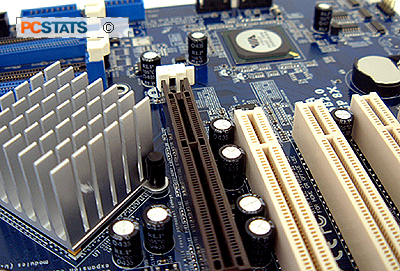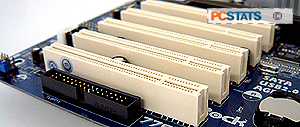ASRock 775V88 VIA PT880 Motherboard Review
There's little doubt that Asus
is one of the technological leaders in the motherboard industry. One area that
Asus had not previously explored much is the entry-level market, where
companies like Biostar, ECS, and others have a strong
foothold. Traditionally, Asus' motherboards have been built to satisfy the needs and wants of higher-end systems and price points, with features to match. Since the entry-level motherboard market is
extremely large, and determined foremost by prices, you can understand why Asus would want to
try its hand at it eventually.
Asus had
a bit of a branding problem to deal with first
though. How do you enter this market when you're known as an exclusively mid
to high-end parts provider? To avoid diluting its respected motherboard brandname, Asus
decided to create a new subsidiary focused entirely on entry-level motherboards
and peripherals, and thus ASRock was born.
Anyone
who has shopped around for a motherboard will have already noticed just how inexpensive ASRock
motherboards are. ASRock's boards are based on the same technology as other
current chipset products, but are built with less frills, and less expensive
components. For the budget conscience user, they're exactly what the doctor
ordered.
PCStats
will be looking at the VIA PT880-based ASRock
775V88 motherboard today. When PCstats first looked at the
VIA PT880 reference board in January, we noted that performance of the chipset was
quite good, definitely comparable to Intel's i865PE. Built
for Intel's new Socket 775 Pentium 4 'Prescott' processor (533/800MHz FSB), the
ASRock 775V88 is a no frills motherboard and does not come with many
features. With a retail price of just $76 CDN ($63 US) though, pretty much all can
be forgiven. The only onboard components included are built-in 5.1 audio, two Serial ATA ports, and
a VIA 10/100 Ethernet adaptor. Not a lot, but really quite perfect for building office
PCs.
 |
|
|
The VIA
PT880 chipset allows
this board to support two PC3200 DDR modules (Max 1GB) or four PC2700/2100 DDR
modules for a maximum of 3.5GB. Dual channel DDR operation is supported. Asus typically
does not use colourful PCBs for its own brand of motherboards, but the ASRock 775V88's
is a nice shade of blue. Since not much comes integrated into the
775V88, ASRock has equipped this full-sized board with five PCI slots, and one 8X
AGP slot. This should be enough for anyone's expansion needs.
 The
Asrock 775V88 uses VIA's VT8237 southbridge chip. While this IC lacks some
of the features of other recent chipsets from Intel and nVidia, one neat feature that the
VT8237 southbridge does support is hot swapable Serial ATA hard drives. Not
many other Southbridge chips out there can boast this, and it's handy when you want to
move a large amount of data between PCs.
The
Asrock 775V88 uses VIA's VT8237 southbridge chip. While this IC lacks some
of the features of other recent chipsets from Intel and nVidia, one neat feature that the
VT8237 southbridge does support is hot swapable Serial ATA hard drives. Not
many other Southbridge chips out there can boast this, and it's handy when you want to
move a large amount of data between PCs.
Since the ASRock 775V88 does not
generate a lot of heat, it can be placed in smaller cases without any
problems. During testing, the Northbridge heatsink got moderately warm while the
Southbridge ran quite cool.
We had
a few issues with the design of
the motherboard. first off, I'm not a fan of the sliding AGP lock that ASRock
uses on this board. In order for it to work you must slide both top
and bottom simultaneously. This can be quite difficult to do when installing longer-length videocards.
 There is also way too little space between the
metal Northbridge heatsink and the AGP slot. If a videocard is installed with
any type of rear heatsink, there is a good chance it will interfere with the
Northbridge heatsink. Use a bit of caution when installing here.
There is also way too little space between the
metal Northbridge heatsink and the AGP slot. If a videocard is installed with
any type of rear heatsink, there is a good chance it will interfere with the
Northbridge heatsink. Use a bit of caution when installing here.
Lastly, the placement of the floppy drive connector at the bottom of the motherboard may work for
small tower cases, but it isn't such a great position when the floppy drive
cable has to wrap around and over any PCI devices that are installed. This could potentially disrupt
airflow. It also means that if you're using a full tower ATX case, it might be difficult
for the cable to reach the drive.
Apart from these
issues though, the ASRock 775V88 motherboard's design is sufficient to be effective.

